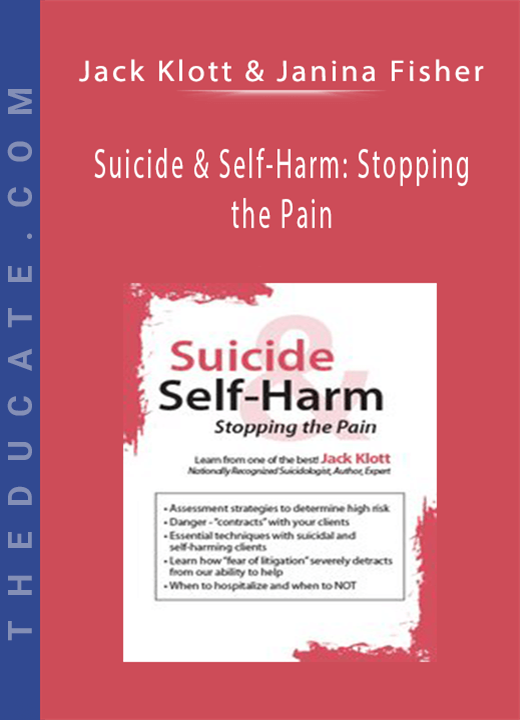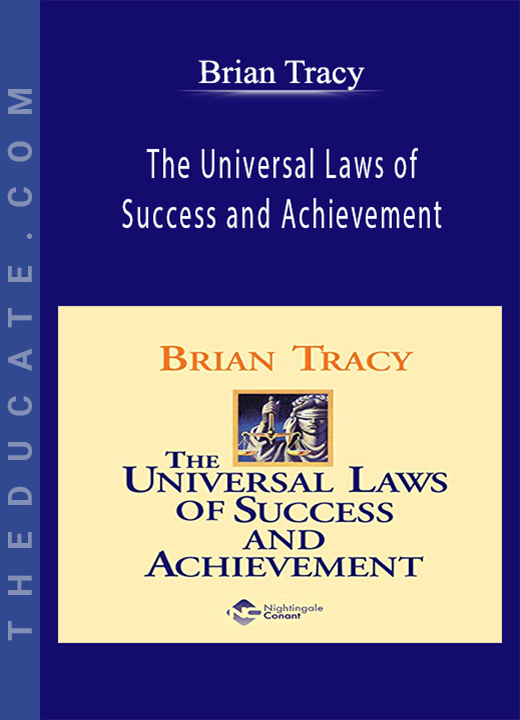Description
Jack Klott & Janina Fisher – Suicide & Self-Harm: Stopping the Pain
Your client just revealed that she’s having suicidal thoughts…what do you do?
Does she have a gun? Has she written letters? Picked a location? Does she have hope something will change and doesn’t want to hurt family and friends?
Helping clients confront the darkness of suicide and self-harming behaviors is difficult for even the most seasoned therapists. But when you know how to help clients discover the sources of their pain and provide them with healthy options for solving and managing the struggles in their lives, you can offer them the key to hope.
In this groundbreaking new course, nationally known suicide prevention author and speaker Jack Klott, MSSA, LCSW, CSWW, shares expert clinical insight from his 45-year career as a suicidologist and counselor, and bring to life ideas, theories and core concepts that you can immediately use to help your clients manage their emotional pain and behaviors.
You’ll learn the reasons why clients self-harm or attempt suicide and the neurobiological basis of suicide, effective assessment strategies to identify the major warning signs of a pending suicide that could save your client’s life — and increase your confidence and effectiveness in treating clients without the fear of liability.
Offer hope for the hurting…get started today.
Treatment Essentials for Helping Clients Confront Devastating Emotional Pain
Asking your client, “where do you hurt?” often reveals the focus of the suicidal intent or the purpose of self-harm behaviors. As a clinician, it’s important to remember that even though you view suicide and self-harm behaviors as dysfunctional and maladaptive, your client views them as purpose-driven means of eliminating or managing unbearable levels of pain. For your client, these behaviors are beneficial, attractive, and helpful.
In this online course, you’ll learn how to develop an empathic view of your client’s behaviors, so you can help them discover the sources of their emotional pain and provide them with healthy, less harmful options for solving and managing their struggles to transform their outcomes.
Through engaging conversation and case studies, you will learn to:
- Implement a risk assessment strategy to help determine which clients present the highest risk for suicide and self-harm.
- Differentiate self-mutilation from suicide attempts and accurately identify when self-mutilation is a warning sign for potential suicide completion.
- Recognize the profound danger of engaging in suicide “contracts” and communicate their impact on clients, clinicians, and clinical vigilance.
- Determine the goals and purpose behind self-injuring behaviors and apply clinical strategies to help clients manage triggering situations without engaging in self-harm.
- Intervene in crisis situations and develop a strategy for determining when and how to hospitalize clients.
- Consider the role of addictions in the suicidal and self-mutilating population, and employ a multi-faceted therapeutic approach that ensures client safety while treating the addiction.
- Overcome the “fear of litigation” that can severely detract from your ability to help the suicidal population.







9 reviews for Jack Klott & Janina Fisher – Suicide & Self-Harm: Stopping the Pain
There are no reviews yet.